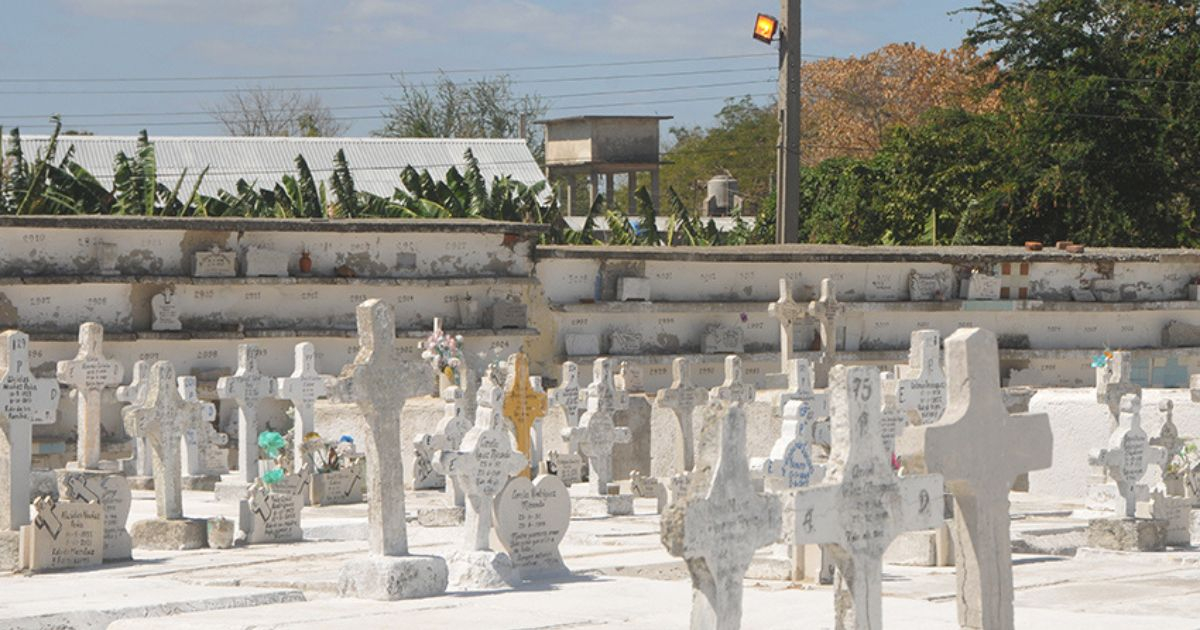
The province of Las Tunas is the only one in the country that does not have a crematorium, forcing residents to travel to other cities to access this service.
The official newspaper Periódico 26 reported that if the relatives of the deceased wish to use this service, they must carry out the cremations in Camagüey, Santiago de Cuba, or other provinces, first processing the request through the Municipal Services Company. This means that bureaucratic obstacles are added to the grief of the moment.
The incinerator for fossil remains located near the Acinox company, right where the construction of a new cemetery for this eastern city was planned, is also not operational, which further complicates the situation, admitted Eiser Prieto Pons, deputy director of Hygiene and Necrology in the province.
"The team is ready, but there are still civil works that have prevented the start," acknowledged the official.
He justified that, due to a lack of various resources like cement, they have been unable to create "a section that can be disassembled later to incorporate the other equipment needed for cremation, which is what's missing."
The province of Las Tunas has 64 cemeteries. However, the Vicente García cemetery in the provincial capital and the one in the city of Puerto Padre are the ones facing the most critical situation regarding their capacity to create ossuaries and niches.
The situation has been exacerbated because the microlocation for starting the construction of a new cemetery in both cities is not yet clearly defined, as noted by the news website.
In this regard, he pointed out that "the things that were already clear are now subject to changes for various reasons," without mentioning the factors that put at risk the ability of the people from Tunero to bid farewell to their loved ones in a dignified manner.
And while "those realities are being resolved," the cemetery workers perform some minor maintenance tasks, which do not address the fundamental problem troubling the population: the danger of being unable to bury their loved ones due to a lack of space.
However, this situation does not catch the government of Las Tunas by surprise.
The weekly publication, in its digital version, warned in 2021 that amidst the rising death toll due to the Covid epidemic, it was evident that the cemetery was overwhelmed.
"Community Services in Las Tunas works skillfully to develop the necessary capabilities in the cemeteries, ensuring that this sensitive process proceeds smoothly," he noted.
The bizarre situation involved hastening "the process of exhuming the bodies," in order to "reutilize the space and contribute to the burial of the deceased."
Another of the "strategies" was to use other cemeteries, such as Becerra and, as a last resort, Santa María.
However, three years ago, the problem of lack of space was already on the horizon, a situation that has yet to be resolved in Las Tunas.
The issue of cemeteries in Cuba often impacts the families of the deceased, who frequently find the remains of their loved ones exposed, due to the government's lack of investment in maintenance and improvements.
Recently, human remains were exposed in the Bayamo cemetery after the wall covering them collapsed, reported the internet user Leosbel Luis Mojena.
In a Facebook reel, the young man asserted that dozens of remains are exposed to the elements outside the facility following the collapse of the protective wall.
For his part, the exiled doctor from Granma, Alexander de Jesús Figueredo Izaguirre, ironically stated on Facebook that one can now uncover "the history that hides in every corner of the revolutionary cemetery in Bayamo."
Also in April, the young Cuban Camila Navarro, after visiting her grandfather's grave in the Colón Cemetery in Havana, came across a scene of neglect and deterioration.
A dancer, influencer, and personal trainer residing in Europe, the young woman shared a video on Instagram showcasing the deplorable condition of the cemetery.
Filed under: